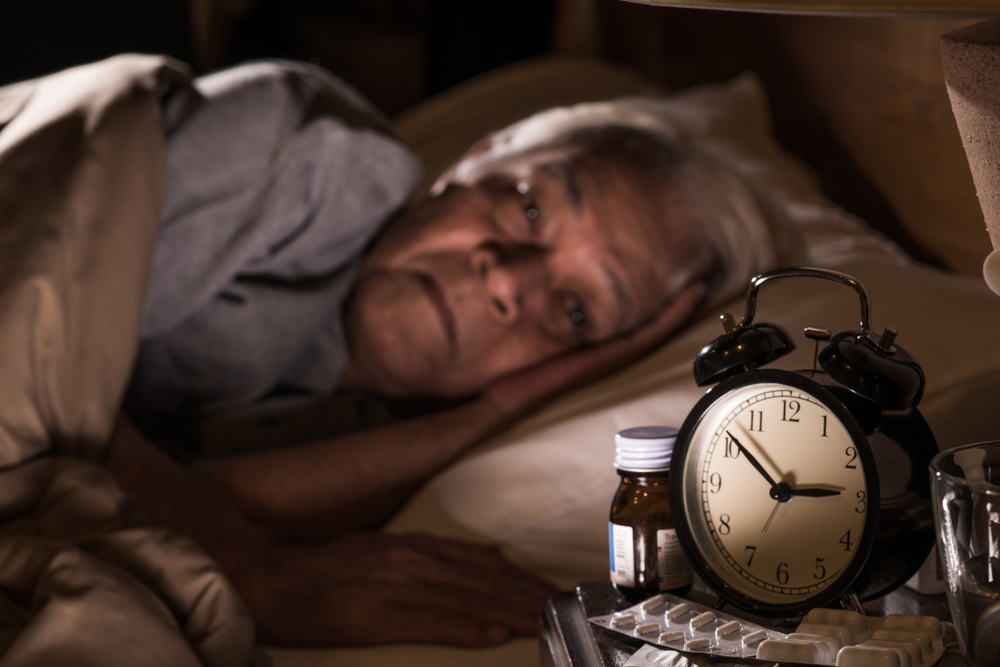Author
Reviewer
Share Article
SOME CALL IT SLEEP

“To sleep, perchance to dream ….” Hamlet
| Author | Reviewer |
|
Christine Palmay, MD, CCFP, FCFP |
Tom Janzen, MD, MCFPC Parkwood Institute Mental Health London Health Sciences Centre, St. Joseph’s Health Care Chief Medical Information Officer (CMIO) Primary Care with Focus in Mental Health London, ON |
The psychological and physical effects of insomnia are often underappreciated, underdiagnosed and under treated. Misconceptions regarding sleep disorders by both patient and care providers alike create barriers to managing this chronic disease. Recent innovation in treatment options may make the Shakespearean prose more easily attained.
What’s the Big Deal?
Many of our patients experience sleep related difficulties and nearly one in 7 will meet the diagnostic criteria for insomnia disorder. This estimate may be low as many patients self medicate believing that effective medical treatments are not available (more to come on this). Work absenteeism, poor academic performance, driving impairment, cognitive problems and social struggles represent real concerns. Insomnia Disorder IS a big deal and COVID did not help. Sleep experts suggest that nearly 40% of the population experienced some form of “COVID-somnia”.
disorder. This estimate may be low as many patients self medicate believing that effective medical treatments are not available (more to come on this). Work absenteeism, poor academic performance, driving impairment, cognitive problems and social struggles represent real concerns. Insomnia Disorder IS a big deal and COVID did not help. Sleep experts suggest that nearly 40% of the population experienced some form of “COVID-somnia”.
- It’s temporary - Reframing insomnia as a chronic condition
While many patients experience short-term sleeping disturbances due to life circumstances, several patients struggle long-term. Similar to diabetes, obesity and osteoporosis, insomnia is a chronic disease and needs to be approached accordingly. This includes a proper assessment, regular follow-up and in some instances, long-term medication options. As a colleague once said, ‘you wouldn’t randomly stop a diabetic medication”…. insomnia is no different. Sleep experts suggest avoidance of long-term prescriptions with regular follow-up to monitor response.
- It’s in your Head! - Understanding co-morbidities
As you are likely aware, insomnia can cause and/or be the result of many chronic health conditions. Mental health, chronic pain, Respiratory Disease, CV disease, obesity….the list is endless. Most sleep experts advise that we understand and respect the bi-directional relationship between insomnia and it’s co-morbidities. By treating one, you aren’t necessarily treating the other. In May of 2013, DSM-5 introduced Insomnia Disorder as a stand-alone diagnosis which is estimated to affect 13% of the general population. The previously accepted practice of categorizing insomnia as primary or secondary has been replaced by diagnosing Insomnia Disorder.

- Just Treat and Sleep! The importance of a proper work-up
As a chronic disease, insomnia requires a proper work-up and regular follow-up similar to any other chronic conditions. SCREEN for co-morbid conditions. ASK about the use of over-the-counter medications, alcohol, drugs etc. REVIEW medications that may interfere with sleep. NOTE red flags that would prompt a sleep study such as a history of snoring/apnea or predisposing conditions such as hypertension, obesity and COPD/Asthma. Sleep diaries and/or scales can also help assessed the severity of the disease and guide treatment response:
- Insomnia Sleep Severity Index:
https://www.ons.org/sites/default/files/InsomniaSeverityIndex_ISI.pdf
- Pittsburgh Sleep Quality Index (PSQI):
https://www.singularsleep.com/pages/pittsburgh-sleep-quality-index
These tools can be completed digitally and enable remote diagnosis/assessment.
Having a standardized approach is essential and should be adaptable to a hybrid model of in person and virtual care
- Do what your Mamma Said – Understanding the role of lifestyle changes
Sleep hygiene may not be sufficient. Strategies such as limiting caffeine (as much at 10 hours prior to bedtime!), reducing alcohol intake and increasing exercise are sensible options but may not be enough. Insomnia Disorder Guidelines strongly recommend that cognitive behaviour therapy for insomnia (CBT-I) be included with our management. This approach involves a structured 3-8 week program. In addition to sleep hygiene, CBT-I includes the addition of stimulus control, relaxation techniques, and sleep restriction techniques. This approach is clearly effective and when followed can result in improvement in sleep for 75% of our patients. Adherence to the principles of CBT-I can be challenging and discontinuation rates are not infrequent. As such, monotherapy with this approach is often not sufficient to fully restore a normal sleep pattern and some patients may require the addition of medication.
- The Stigmatized “Sleeping Pill” - Understanding medication options
 There’s no doubt that patients are self-medicating. Whether it is alcohol, drugs or over-the-counter medications (antiemetics , anti-histamines or cough medications,) patients are desperate. The sleep aid industry knows this and generates billions offering frequently untested and often ineffective options to patients. I prefer to offer patients an evidence-based approach that can be monitored and adjusted versus leaving it to chance.
There’s no doubt that patients are self-medicating. Whether it is alcohol, drugs or over-the-counter medications (antiemetics , anti-histamines or cough medications,) patients are desperate. The sleep aid industry knows this and generates billions offering frequently untested and often ineffective options to patients. I prefer to offer patients an evidence-based approach that can be monitored and adjusted versus leaving it to chance.
Medications we have currently indicated for sleep include:
- Benzodiazepines
- Z-drugs
- Low dose anti-depressants (off-label)
- Dual Orexin Receptor Antagonists (DORA)
While this summary cannot address all pharmacological options specifically, I would like to highlight the most recent entry to this class – dual orexin receptor antagonists. When describing how these medications work, I tell my patients that this medication turns “off” their “wake switch”. This decreases their arousal and allows for a more natural sleep. Lemborexant (Dayvigo) became available in 2020 and is the first in this class available to Canadian physicians. Long term studies have shown persistent efficacy over 12 months supporting longer term use for our patients. Common side effects include fatigue, headache and drowsiness. As with any sleep medications, patients should be informed of possible nightmares, abnormal dreams, and sleep paralysis. Setting expectations is key. Furthermore, favorable safety data exists for fall risk (assessed by sway studies) and driving safety. When prescribing sleep aids we need to monitor closely for dependence/withdrawal. Encouragingly lemborexant was not associated with concerning dependence, rebound insomnia or withdrawal in studies.
 There isn’t a “one size” fits all option. Each patient has a specific set of risk factors, and these may change over time. Furthermore, patient counseling is essential. When starting a new medication, discuss the possibility of next day sedation. Inform the patient that they should have 7-8 hours of sleep time to reduce the chance of fogginess. Encourage patients not to use alcohol. Check in regularly. Most importantly, weigh the balance of the medication’s side effect profile versus the risk of NOT treating insomnia.
There isn’t a “one size” fits all option. Each patient has a specific set of risk factors, and these may change over time. Furthermore, patient counseling is essential. When starting a new medication, discuss the possibility of next day sedation. Inform the patient that they should have 7-8 hours of sleep time to reduce the chance of fogginess. Encourage patients not to use alcohol. Check in regularly. Most importantly, weigh the balance of the medication’s side effect profile versus the risk of NOT treating insomnia.
- Virtual Care is Here to Stay – Resources
Virtual care has become an important component of the care we offer. It is here to stay and has expanded the options of how we manage many chronic diseases. Digital resources can be a lifesaver and are enabling patients to access care remotely. This care option has been particularly effective in helping our patients suffering with insomnia disorder.

- Canadian Sleep Society (CSS): https://css-scs.ca/
- Canadian Sleep and Circadian Network (CSN): https://www.cscnweb.ca/
- Sleep on it (CSS & CSCN): https://sleeponitcanada.ca/sleep-disorders/chronic-insomnia/
- Sleep Foundation: https://www.sleepfoundation.org/
- MySleepWell: https://mysleepwell.ca/
 Managing insomnia can be a challenge and requires an individualized approach. I encourage readers to develop their own standardized approach. NOT treating insomnia is NOT an option as the burden of this disease impacts physical, emotional health and quality of life. Proper management including counseling as well as education and regular check-ins will help ourpatients and quite frankly clinicians sleep well.
Managing insomnia can be a challenge and requires an individualized approach. I encourage readers to develop their own standardized approach. NOT treating insomnia is NOT an option as the burden of this disease impacts physical, emotional health and quality of life. Proper management including counseling as well as education and regular check-ins will help ourpatients and quite frankly clinicians sleep well.
CBT-I Resource List:
|
Resource |
Description |
Where to find |
|
CBT-i Coach |
Mobile App developed by US Veteran Affairs (free) |
iTunes/ Google Play |
|
Conquering Insomnia |
5-week self-paced program available in downloadable format |
|
|
Online-Therapy Insomnia |
Online tailored program with daily interaction with a therapist & forum access |
|
|
Haleo |
Online CBT-I program that patients can access (approx. $500 Cnd; may be partially or fully covered by extended health insurance) |
|
|
Sleepio |
Online tailored CBT (approx. $400/year) Allows monitoring by HCP as patients work through CBT sessions and sleep diaries Requires US IP address |
|
|
SlumberPro |
4-8 weeks of daily online self-help |
|
|
Sleepwell |
List of recommended CBT-I resources provided |
|
|
Go! To Sleep |
Cleveland Clinic Wellness program (cost: $40 USD) 6-week online course |
|
|
Insomnia Solved |
Self-Guided CBT-I program by Dr. Brandon Peters |
Click the links below to read our other blogs:
![]() What advice do I give to my patients who use dietary supplements for cholesterol lowering?
What advice do I give to my patients who use dietary supplements for cholesterol lowering?
![]() Why are we still talking about hypertension?
Why are we still talking about hypertension?
The development of this blog was overseen by the Canadian Collaborative Research Network and was supported through an educational grant from Eisai.
copyright © 2025 CCRN
Any views expressed above are the author's own and do not necessarily reflect the views of CCRN.

